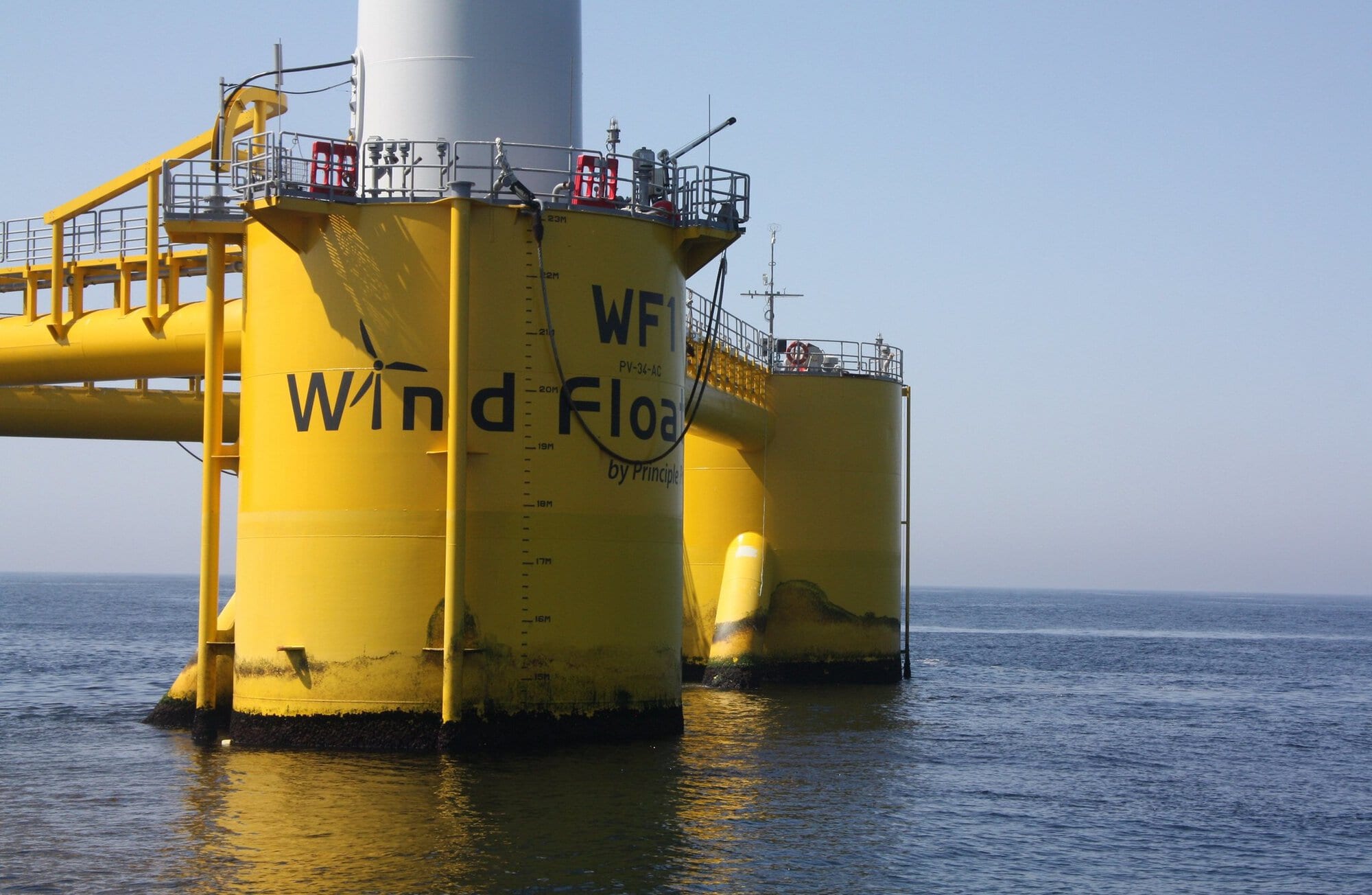Three Questions with Stephanie Watson, Floating Offshore Wind Manager at the Maine Governor’s Energy Office

Photo Credit: US Department of Energy
 The Gulf of Maine contains some of the nation’s best offshore wind resources, but its deep ocean and harsh conditions present formidable obstacles to offshore wind development. Maine has embraced the challenge, with Governor Janet Mills signing An Act Regarding the Procurement of Offshore Wind Energy Resources this past summer, authorizing the state to procure up to 3,000 MW of offshore wind, develop an offshore wind port, and protect critical lobstering areas.
The Gulf of Maine contains some of the nation’s best offshore wind resources, but its deep ocean and harsh conditions present formidable obstacles to offshore wind development. Maine has embraced the challenge, with Governor Janet Mills signing An Act Regarding the Procurement of Offshore Wind Energy Resources this past summer, authorizing the state to procure up to 3,000 MW of offshore wind, develop an offshore wind port, and protect critical lobstering areas.
CESA’s Sam Schacht spoke with Stephanie Watson, Offshore Wind Manager at the Maine Governor’s Energy Office, about Maine’s path to an offshore wind economy and the research the state is spearheading on floating offshore wind technologies.
CESA: What is the state of play for offshore wind in Maine right now?
Stephanie Watson: The passage of the offshore wind energy procurement law last July was really exciting for us. This was the first milestone coming out of the Maine Offshore Wind Roadmap, which we published about a year ago. It’s key for signaling to the market that we’re very interested in offshore wind, and we need it to meet our clean energy climate and economic goals. It authorizes Maine to procure 3,000 MW of offshore wind power installed in the Gulf of Maine by 2040. There are multiple steps along the way. First, we’ll develop a Request for Proposals (RFP) in consultation with states, Tribes, and other stakeholders. The RFP is due to the Public Utilities Commission in July 2025 and then has to be opened for bids by January of 2026. Then, there will be future solicitations to get us up to 3,000 MW by 2040.
In the coming months, we anticipate publishing a Request for Information (RFI) to get additional input about what the public would like to see in our future solicitation. We want to make sure that we are addressing all the key objectives and priorities from the Maine Offshore Wind Roadmap, which was developed over 18 months with a lot of stakeholder input and perspectives. This law really reflects those perspectives.
In parallel to the commercial offshore wind leasing process in the Gulf of Maine, there is also a research lease. This is an initiative by Maine asking for about 15 square miles in federal waters of the Gulf of Maine to deploy a grid connected, floating offshore wind research project with about 10 turbines up to 144 MW total, utilizing the University of Maine’s semi-submersible concrete floating technology. We submitted this lease to BOEM in October of 2021, and the goal is to better understand the technology and how to deploy it in a way that’s most cost-effective and environmentally responsible. We are still awaiting BOEM’s decision on the research lease.
CESA: Can you explain the Gulf of Maine’s unique environmental and technical challenges compared to the rest of the East Coast?
Stephanie Watson: The first challenge is that the Gulf of Maine is deeper than other areas along the East Coast where fixed offshore wind projects are either planned or operating now. The Gulf of Maine has depths up to 300 meters, which means we have to use floating technologies. Floating technologies have been deployed around the world in areas between 30- and 200-meter depths so far, and the Gulf of Maine’s depths are kind of a next step, not only for the US, but also a transition step for floating offshore wind technologies in general. It’s pretty exciting for us to be testing out this technology in a new depth range.
The second technical challenge for the Gulf of Maine is bringing the power to shore. The potential lease areas in the Gulf of Maine from BOEM’s recently announced Final Wind Energy Area are between 23 and 92 miles from shore. This is much further than other offshore wind farms in the United States.
The last challenge is that the Gulf of Maine is a really highly productive ecosystem. I think there are more than 3,000 marine species and birds and thriving seafood industries that depend on it, so we need to make sure that we are deploying floating offshore wind in an environmentally responsible way. The greatest challenge to the Gulf of Maine, of course, is climate change. It’s warming faster than 99% of the world’s oceans, and offshore wind is providing a clean energy source that can mitigate climate changes.
CESA: How is Maine meeting those environmental and technical challenges?
Stephanie Watson: On floating offshore wind technology and deep waters, the State has been working with the University of Maine, which is a pioneer in floating technology, as well as the National Offshore Wind Research and Development Consortium, the U.S. Department of Energy (DOE), and others. We’re working on many things, like new foundation designs, new mooring and anchoring designs, and serial production approaches for offshore wind components for floating offshore wind. Additionally, Maine has identified Searsport as a location with the right characteristics to manufacture and integrate floating offshore wind turbines for the Gulf of Maine. This port is going to be essential to deploying floating offshore wind technology to meet the 13 GW of clean energy goals that Massachusetts and Maine have combined.
On the grid and transmission planning side, we’re working with the other Northeast states and DOE to pursuing all the federal funding we can from the Bipartisan Infrastructure Law and Inflation Reduction Act to improve the infrastructure for both for bringing power to shore and then connecting it to the grid. We’ve released a joint RFI with the other Northeastern states recently, and we also participated in multiple studies, including the DOE National Transmission Plan and the Atlantic Offshore Wind Transmission Study.
On the environmental side, we have a state offshore wind research consortium that’s funded with seed money from the state legislature focused on reducing the cost and potential impacts of floating offshore wind on the Gulf of Maine. We have an advisory board that’s an assembly of fishermen, fishing industry reps, NGOs, offshore wind industry officials, state agencies and community representatives. They are identifying key research priorities for that state funding, and hopefully other funding. We also participate in some of the regional groups on environmental topics like the Regional Wildlife Science Collaborative for offshore wind, which we’ve found to be really helpful and important.
Published On
April 3, 2024

